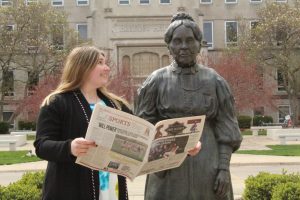By increasing the minimum wage, it might sound like students will end up with more cash in their pockets to save for tuition or a night at Crusen’s. Sounds like a great deal, right?
However, this may not be beneficial for students. The higher minimum wage will put pressure on Bradley, according to President Gary Roberts.
He predicts the student workforce will be cut significantly if the university is forced to follow through with a $15-an-hour minimum wage by 2025. This could be troublesome for students that depend on part-time jobs to pay their tuition.
Due to the possibility that the university may no longer offer as many student work hours, students should be more proactive in saving money they make over the summer or in high school. Also, more students may have to look for jobs off-campus in Peoria instead of relying on jobs at Bradley.
In addition to not being able to find jobs, the issues of the wage increase may cause on-campus activities to be cut for students.
Think of all the activities on campus staffed by student workers: Markin, intramurals, the library, the safety cruiser and tutoring are just a few examples. By having to pay students $6.75 more by 2025, some of these essential and helpful services for students may be affected.
Another way to compensate for the increased costs for the university, student fees could go up.
Nathan Thomas, vice president for student affairs, said administration has not discussed increasing costs for students yet, but he said it might be a possibility.
Roberts said he hopes to find a solution other than cutting student jobs.
Although administration has not made any decisions yet on how to deal with these increased costs, it may result in a different life on the Hilltop for students.
We hope and are confident that administration will spend time taking a good look at how the university can not only keep students employed, but also still provide the same opportunities on campus.



